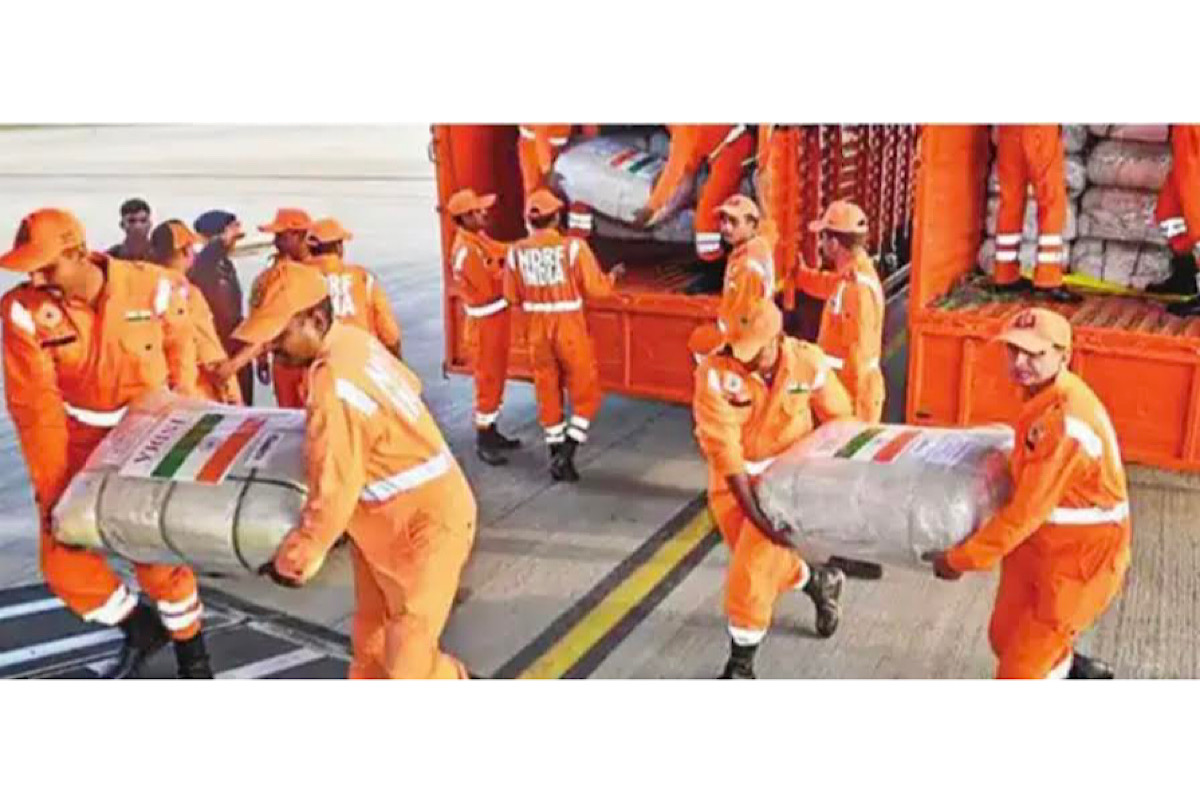After a devastating earthquake hit Turkey and Syria on February 7, killing at least 35,000 people as per available statistics, India promptly dispatched a relief and rescue team. Reacting within a few hours under Operation Dosti, India was among the first countries to respond to the earthquake. Among the foreign policy responses India has devised over a period, humanitarian assistance and disaster relief has emerged as the most effective tool to make an effective intervention in support of life.
As is known, the region is prone to natural disasters, especially cyclones and floods. According to the Asian Development Bank, “People in Asia and the Pacific were displaced more than 225 million times due to disasters triggered by natural hazards from 2010 to 2021, accounting for more than three-quarters of the global number.” These statistics seriously reflect the challenges that confront the region. The ability to reach first in times of natural disasters, given the geographical location of India in the South Asian region, has been branded by various political leaders in New Delhi, defining its role as a “net security provider”.
Advertisement
India’s role in disaster relief has evolved over the years. To make its outreach effective and swift, India established the National Disaster Management Authority (NDMA) in 2005, which stands on four pillars: Prevention, Mitigation, Preparedness and Response. Though a recommendation to form such a mechanism had been made by a government-appointed high-powered committee in 1999, the Indian Ocean Tsunami perhaps awakened India to its capacity and ability to respond.
India’s National Disaster Response Force (NDRF) was established in 2008 as a dedicated force trained in disaster response. It has 15 battalions drawn from various paramilitary forces which are trained for the purpose. It has been at the forefront of India’s effort to reach out to countries that are facing an immense humanitarian crisis due to natural disasters. India has always responded to crises in the neighbourhood and beyond. However, only recently have the efforts become more efficient and better structured. The need for agencies like the NDRF was felt long back to enable India to respond swiftly to natural disasters within the country and in the immediate neighbourhood. The Indian Ocean Tsunami was the first major response of India in operationalising effective relief. India conducted relief and rescue operations by sending its navy when a powerful tsunami hit Sri Lanka and the Maldives in December 2004; it also extended support when Cyclone Sidr battered Bangladesh’s coast in 2007. In 2008, it extended help when Cyclone Nargis hit Myanmar though the military junta carried out the aid distribution.
India was the first country to dispatch the INS Sukanya and the INS Deepak with 1,200 tonnes of drinking water when a fire broke out at the water treatment plant in Male, resulting in a drinking water crisis in 2014. It became one of the first countries to reach Nepal during the 2015 earthquake when an NDRF team got there right after the disaster. Apart from extending help during natural disasters, India has provided relief to the Rohingya refugees and the local population under Operation Insaniyat.
Evacuation is another important aspect of India’s increasing profile for providing humanitarian assistance. It evacuated Indian nationals as well as 960 foreigners from 41 countries when civil war broke out in Yemen in April 2015 under Operation Rahat. Within six hours, India sent a rescue team and relief to Nepal in April 2015 under Operation Maitri led by the Indian Army.
Not only has India augmented its ability to emerge as a first responder, it has also established an early warning system to predict natural disasters, including tsunamis in the Indian Ocean. In 2014, it provided $1 million to a trust fund to establish an early warning system as part of the Indian Ocean Tsunami Warning and Mitigation System. The Indian-funded South Asia satellite that India launched helps in enhancing communication technology and disaster information transfer. Recently, the World Meteorological Department entrusted India with the responsibility of coordinating, developing and implementing the Regional Centre of South Asia Flash Flood Guidance System. India has been using it since 2020 to warn its neighbours of impending flash floods.
Capacity building of the neighbours is one of the priorities for India, apart from holding joint exercises to build interoperability. The South Asian Annual Disaster Management Exercises is one of them. India has several regional and international cooperation activities to carry its humanitarian assistance and disaster relief mission forward. However, it needs to engage more deeply in capacity building through training and joint exercises. There are the Bay of Bengal Initiative for Multi-Sectoral Technical and Economic Cooperation (BIMSTEC) disaster management exercises which are hosted by India, and the Indian Ocean Rim Association (IORA) exercises.
India, which defines its role as a first responder in the neighbourhood, has been efficient in reaching out in times of natural disasters. During the Covid-19 pandemic, it stood true to its role when it dispatched vaccines to countries in the neighbourhood. However, it could not live up to the expectation it had generated through its vaccine maitri outreach when it faced a severe second wave of the Covid-19 pandemic and stopped exporting vaccines. This created a crisis as neighbours scrambled for vaccines, which certainly created a dent in India’s credibility as a first responder.
To succeed in this role, India needs to engage in capacity building and joint exercises and work on interoperability between agencies. As disaster relief also requires engagement with locals, multi agency participation at the bilateral level is important. The 2022-23 budget of the External Affairs Ministry has earmarked INR 50 million for Disaster Relief under the heading Aid to Countries. Though this budget allocation appears minuscule, humanitarian assistance and disaster relief even featuring in the budget of the External Affairs Ministry shows that they have emerged as an important foreign policy instrument for India.











